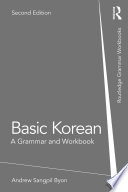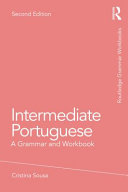Japanese Grammar A Workbook for Self Study 1st Edition by Masahiro Tanimori ISBN 1462921965 9781462921966
$50.00 Original price was: $50.00.$25.00Current price is: $25.00.
Japanese Grammar: A Workbook for Self-Study 1st Edition by Masahiro Tanimori – Ebook PDF Instant Download/Delivery: 1462921965, 9781462921966
Full download Japanese Grammar: A Workbook for Self-Study 1st Edition after payment
Product details:
ISBN 10: 1462921965
ISBN 13: 9781462921966
Author: Masahiro Tanimori
Japanese Grammar: A Workbook for Self-Study 1st Edition: If you’ve mastered the basics of Japanese grammar and are ready to move to the next level, this book is for you!
Each of the 12 chapters is devoted to one widely-used sentence structure and its variations. Chapters are broken down into the following easy-to-follow components:
- Clear presentation of model sentences
- Breakdown and explanation of the grammar of key sentence patterns
- Controlled practice exercises, such as filling in the blanks and imitating model sentences
- Free practice exercises, using the target sentence structure to create your own sentences
- Reading comprehension practice, of narrative text and dialogues, for consolidation
Online audio files recorded by a native speaker are available for all key Japanese dialogues, and all texts are written in Japanese characters with romanized Japanese and English translation—making the book accessible even for students who have not yet mastered Japanese script. The book is illustrated throughout with drawings that reinforce the meaning of the written text.
Japanese Grammar: A Workbook for Self-Study is ideal for anyone studying for the JLPT N3 test, or the AP Japanese Language and Culture test. It is perfect for post-beginners who want to move quickly to the next level, and for intermediate students who want to review and perfect their grammar skills.
Japanese Grammar: A Workbook for Self-Study 1st Edition Table of contents:
Chapter 1: This Is the Mobile Game I Often Play
- Using Verbs to Modify Nouns
- Key Sentence Patterns
- Formation of the Modified Noun Phrase
- Grammar and Usage Notes
- 1.1 Verb conjugations
- 1.2 Using the dictionary form to modify a noun
- 1.3 Other verb and adjective forms used to modify nouns
- 1.4 Example verb forms used in modified sentences
- 1.5 Example adjective and adjectival noun forms used in modified sentences
- Conversation Practice: Beer Brands
- Reading Practice: Cheap Tickets
Chapter 2: I Can Write About 100 Kanji
- Using the Potential Form of the Verb
- Key Sentence Patterns
- Formation of the Potential Form
- Grammar and Usage Notes
- 2.1 The potential form using -ARERU
- 2.2 The potential idiom KOTO GA DEKIRU
- 2.3 The potential verbs MIERU and KIKOERU
- 2.4 The potential verbs TO IERU, TO KANGAERARERU and TO OMOWARERU
- Conversation Practice: A Hot-spring Bath
- Reading Practice: Kanji and Onomatopoeia
Chapter 3: Please Don’t Use Your Smartphone While Walking
- Doing Two Things At Once
- Key Sentence Patterns
- Formation of the -NAGARA Form of the Verb
- Grammar and Usage Notes
- 3.1 Using the -NAGARA form of the verb
- 3.2 The -NAGARA form and the -TE form
- 3.3 Using the -NAIDE and -ZUNI forms of the verb
- 3.4 Expressing limitation using DAKE and SHIKA
- 3.5 More uses of DAKE and SHIKA
- Conversation Practice: Smartphone Use While Walking
- Reading Practice: People Who Do Two Things at the Same Time
Chapter 4: It’s Cheap, Delicious and Quick, So Let’s Have a Beef Rice Bowl
- Expressing Consequence and Giving Reason
- Key Sentence Patterns
- Formation of Sentences Expressing Consequence
- Grammar and Usage Notes
- 4.1 Using GA to express “though”
- 4.2 Using GA to express “and”
- 4.3 Using KEREDOMO to express “though”
- 4.4 Using NO NI to express “though”
- 4.5 Using SHI to give a list of reasons
- 4.6 Using -TEMO/DEMO to express “even if”
- Conversation Practice: We Take Out the Garbage in the Morning
- Reading Practice: Separating the Garbage
Chapter 5: I Have a Headache Because I Couldn’t Sleep Last Night
- Cause and Effect
- Key Sentence Patterns
- Formation of Cause and Effect Sentences
- Grammar and Usage Notes
- 5.1 Giving a reason using KARA/NODE
- 5.2 Giving a reason using TAME (NI)
- 5.3 Giving a reason using N DESU
- 5.4 N DESU with nouns and adjectival nouns
- 5.5 Giving a reason using KARA DA/KARA DESU
- 5.6 Emphasizing a reason using NAZE KA TO IU TO
- 5.7 Emphasizing a reason using JITSU WA
- 5.8 Giving a reason for going using verb + NI IKIMASU
- 5.9 Expressing doing something to excess using -SUGIRU
- 5.10 Expressing consequence using -SUGITE
- 5.11 Expressing “too (difficult) to (do)” using NI WA … -SUGIMASU
- 5.12 Using -SUGI to express doing something too much
- Conversation Practice: I’d Like to Work Part-time
- Reading Practice: Japanese Festivals
Chapter 6: I Think I’ll Go to Itsukushima Shrine Next Time
- Expressing Intentions and Plans and Giving Advice
- Key Sentence Patterns
- Formation of the Volitional Form
- Grammar and Usage Notes
- 6.1 Expressing “let’s” using -O/YŌ
- 6.2 Expressing one’s thoughts using TO OMOIMASU/TO OMOTTE IMASU
- 6.3 Expressing one’s will using -Ō TO OMOIMASU/TO OMOTTE IMASU
- 6.4 Expressing firm intention using TSUMORI and YOTEI
- 6.5 Giving friendly advice using -TA HŌ GA Ī DESU
- 6.6 Expressing how to do something using -KATA
- 6.7 Expressing the method for doing something using HŌHŌ
- Conversation Practice: Splitting the Bill
- Reading Practice: Japanese Table Manners
Chapter 7: I’ll Keep the Air Conditioner Set at 28°C
- Keeping Things in the Same State
- Key Sentence Patterns
- Formation of Sentences Expressing a State
- Grammar and Usage Notes
- 7.1 Expressing a state using -TE OKIMASU
- 7.2 Expressing a temporary state using (GA) -TE IMASU
- 7.3 Expressing an ongoing state using (GA) -TE ARIMASU
- 7.4 Expressing creating a state using (O) -TE ARIMASU
- 7.5 Describing an ongoing state using -PPANASHI DESU
- 7.6 Carelessly leaving something in a certain state using (O) -PPANASHI NI SHIMASU
- 7.7 Describing a resulting state that stays the same using MAMA
- Conversation Practice: The Rainy Season Has Come
- Reading Practice: Various Eco-Activities
Chapter 8: Looking at Traditional Japanese Things Is Something I Like
- Making Verbs into Noun Phrases
- Key Sentence Patterns
- Formation of Noun Phrases Using Verbs and Adjectives
- Grammar and Usage Notes
- 8.1 Making noun phrases using NO and KOTO
- 8.2 Modified noun phrases using NO and MONO
- 8.3 Using NO O to express a physical action
- 8.4 “Looking forward to” using NO/KOTO O TANOSHIMI NI SHITE IMASU
- Conversation Practice: A “Kompa” Party
- Reading Practice: A Japanese House
Chapter 9: Now I Can Understand “Manga” Japanese!
- Resulting States
- Key Sentence Patterns
- Formation of Verb Phrases Expressing Resulting States
- Grammar and Usage Notes
- 9.1 Expressing a resulting state using YŌ NI NARIMASU
- 9.2 Expressing purpose using YŌ NI
- 9.3 Expressing purpose using TAME NI
- 9.4 “For the sake of/for the benefit of/because of” using NO TAME NI
- 9.5 Expressing a purpose using NO NI
- 9.6 Expressing the acquisition of a habit using YŌ NI NARIMASU
- 9.7 Expressing trying to acquire a habit using YŌ NI SHITE IMASU
- 9.8 Expressing habit or determination using KOTO NI SHITE IMASU
- 9.9 Expressing something that has been decided using KOTO NI NARIMASHITA
- Conversation Practice: Commonly Used Kanji Characters
- Reading Practice: The Sounds of Onomatopoeia
Chapter 10: I Was Praised by the Neighbors for Helping with the Cleaning
- The Giving and Receiving of Actions
- Key Sentence Patterns
- Formation of the Passive Form
- Grammar and Usage Notes
- 10.1 Creating the passive form of the verb
- 10.2 Sentence structures using the passive form of the verb
- 10.3 Using verbs of giving and receiving
- 10.4 Expressing giving and receiving help
- 10.5 Polite forms of giving and receiving
- Conversation Practice: Gestures
- Reading Practice: Intercultural Understanding
Chapter 11: The E-mail Address Must Be Wrong
- Degrees of Difficulty and Expressions of Probability
- Key Sentence Patterns
- Formation of Expressions of Probability
- Grammar and Usage Notes
- 11.1 Indicating something is easy using -YASUI DESU
- 11.2 Indicating something is difficult using -NIKUI DESU
- 11.3 Indicating possibility using KAMO SHIREMASEN
- 11.4 Expressing probability using HAZU DESU
- 11.5 Expressing “must” or “must have” using NI CHIGAI NAI DESU
- 11.6 Asking for agreement or opinion using N JA NAI?
- Conversation Practice: It’s Nice, Isn’t It?
- Reading Practice: Ambiguous Language
Chapter 12: I Hear There Was an Intensity 6 Earthquake
- Hearsay, Conjecture and Observation
- Key Sentence Patterns
- Formation of Expressions of Hearsay, Conjecture and Observation
- Grammar and Usage Notes
- 12.1 Expressing hearsay using SŌ DESU 1/RASHĪ DESU
- 12.2 Expressing a guess using YŌ DESU/MITAI DESU
- 12.3 Expressing what is about to happen using -SŌ DESU 2
- 12.4 Using -SŌ DESU 2 after -NAI and Ī
- 12.5 “So … that … (could)” using -TE … SŌ DESU 1
- 12.6 Guessing something is about to change using NARISŌ DESU
- 12.7 Other uses of RASHĪ
- 12.8 The casual auxiliary -PPOI
- Conversation Practice: Japanese Gods
- Reading Practice: The Decrease in the Birth Rate
People also search for Japanese Grammar: A Workbook for Self-Study 1st Edition:
youni japanese grammar
node japanese grammar
tara japanese grammar
nara japanese grammar
basic japanese grammar
Tags:
Masahiro Tanimori,Japanese,Grammar,A Workbook,Self Study
You may also like…
Languages - Japanese Language Reference
Japanese for Busy People Book 1: The Workbook, Revised 4th Edition Ajalt
Relationships & Lifestyle - Psychological Self-Help
Languages - Japanese Language Reference
dictionaries & phrasebooks
Basic Korean A Grammar and Workbook 2nd Edition Andrew Sangpil Byon
Education Studies & Teaching - Teaching - Reading & Language
Basic Korean A Grammar and Workbook 2nd Edition by Andrew Sangpil Byon 1000258912 9781000258752
Languages - Portuguese Language Reference
Intermediate Portuguese: A Grammar and Workbook 1st Edition Cristina Sousa
Languages
Learn Japanese with Manga : A Self-Study Language Guide – Volume Two 1st Edition Marc Bernabe
Education Studies & Teaching - Teaching - Reading & Language
Languages - Japanese Language Reference












